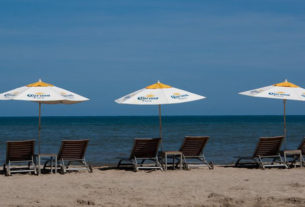The term “Utopia” generally has the connotation of a society that is hopelessly visionary and impractical. This is because most of these societies — Plato’s Republic, St. Augustine’s City of God and Sir Thomas More’s Utopia — never existed outside the minds and published works of their creators.
However, a real-life Utopia existed in Mexico in the 16th century. It was founded by a Spanish churchman greatly influenced by More but, unlike More, in a position to give a practical application to his vision of a just society.
Vasco de Quiroga was born around 1470 (the exact date is uncertain) in the Spanish village of Madrigal de las Altas Torres, near the city of Avila. He was of noble origin, having among his ancestors two Cardinals, a Governor and a Knight of Malta. Unlike most of the conquistadores, who came to Mexico as young men, Quiroga did not arrive in the New World until 1531, when he would have been in his early sixties. Trained as a lawyer, he took holy orders somewhat late in life. But the Church recognized his ability and promotion came rapidly.
To intelligently assess Quiroga’s life and work, it is important to understand the political structure of the society he lived in.
In 1511, a decade before the conquest of Mexico, a group called the audiencia was created in Santo Domingo. Composing the audiencia were judges known as oidores. The organization’s purpose was to handle matters of justice in the Indies so that each case would not have to be referred back to Spain. Where audiencias in Spain were simply courts of justice, in the colonies they were more powerful and also performed legislative and executive functions.
Unfortunately, the first audiencia in Mexico did not get off to a good start. Its President in 1529 was that Himmler of the Spanish colonial era, Nuño Beltrán de Guzmán. Guzmán’s reign of corruption and terror in Mexico City ended only when the courageous Bishop Juan de Zumárraga managed to smuggle a message to the Crown by entrusting it to a sailor on a ship bound for Spain. Royal agents were sent to arrest Guzmán and he, to avoid detention and to deflect criticism by achieving fame as a conqueror, organized an expedition and set off in a westerly direction. His first destination was Michoacán, where he left a trail of pillage and murder in his wake. In the course of this rampage, a Tarascan king was dragged behind a horse and then burned alive because Guzmán thought he was withholding information regarding a gold treasure.
Guzmán was eventually apprehended, first being confined to a dungeon in Mexico. Then, in an event that could have been taken from a medieval morality play, Quiroga sat on the tribunal that ordered that Guzmán be returned to Spain in chains, where he spent the rest of his life as a prisoner. But there remained the task of cleaning up the mess Guzmán left behind. That’s where Vasco de Quiroga came in.
Never in history have two men exercising a strong influence in a given region, been more polar opposites than Nuño de Guzmán and Vasco de Quiroga. Charles V, now aware what a disaster the Guzmán-led first audiencia had been, was determined not to repeat his mistake. President of the second audiencia was Bishop Sebastián Ramírez de Funleal of Santo Domingo, an official of proven integrity, and one of the leading oidores was Vasco de Quiroga. In 1531-32, after pronouncing sentence on Guzmán, Quiroga used his own capital to establish the hospital-school of Santa Fé, on the outskirts of the capital.
Between 1547 and 1554 Quiroga was back in Europe. He wanted to attend the Council of Trent (1545-63), devoted to internal reform in the Catholic Church. He left Mexico in 1545 but his ship was damaged and he was forced to return. Setting off again in 1547, he missed the first phase of the Council. Quiroga took several Indians with him to Europe and presented them at the Spanish court. On his return to Mexico he obtained seedlings of banana trees in Santo Domingo and replanted them in Michoacán.
Appointed Bishop of that province in 1537, Quiroga was now free to put his dream of an ideal community into practice. More’s epic work was published in 1516 and Quiroga believed that applying its principles among the local Indian population would be a perfect way to counteract the horrendous depredations of Guzmán.
Quiroga’s plan, which he implemented with outstanding success, was to create communities in the vicinity of Lake Pátzcuaro, the heart of the Tarascan country, where Indians would not only receive religious instruction, but also in arts and crafts and in the fundamentals of self-government. This was the land that had been so brutally ravaged by Nuño de Guzmán. Bit by bit, the Indians came to realize that the kindly Bishop was as much a representative of the European race as the sadistic conquistador.
Like many utopian communities, the settlements created by Quiroga had elements of a primitive socialism. Each person worked six hours a day and contributed on an equal basis to the common welfare.
When he died, in 1565, Quiroga was just a few years short of centenarian status. Tata (“Father”) Vasco, as he was known by the Indians, left an indelible mark. The skills he implanted among Tarascans of the Pátzcuaro region have been passed down to their descendants, who are considered among the most skilled craftspersons in Mexico. Quiroga trained his pupils in a variety of disciplines and his method of specialization by community endures to this day. You go to Paracho for guitars, Tzintzuntzán for pottery, Santa Clara for copper products and Nurío for woven woolen goods.
The Spanish colonial era was one of astounding diversity. It could produce a daring conqueror like Cortés, a monster like Nuño de Guzmán and a reformer as enlightened and benevolent as Vasco de Quiroga.
(To read an article on the current state of his initiatives, click here.)

